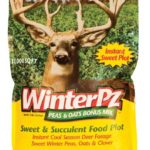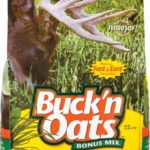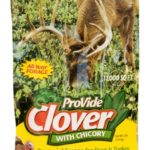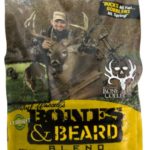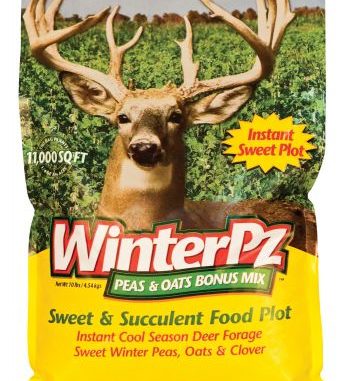
One of the things I love about planting food plots is experimenting with different kinds of seeds. Not only do I like trying out different plants, but I also enjoy comparing feed-store seed with buck-on-bag seed.
I’m not going to get into the argument about whether buck-on-bag seed is nothing more than feed-store seed marketed to deer hunters. Who knows? Maybe it is, and maybe it isn’t.
Regardless of what many may think about buck-on-bag seed, Masson and I have gravitated to it over the last four years for its convenience and easy-to-use seed mixes that fit our small plots just perfectly.
This year, we tried out some of the Evolved Harvest seed blends. Here’s what we used and what the deer preferred.
Winter Pz
This is a blend of winter peas, the same forage oats found in Buck’n Oats, a cross between wheat and rye called triticale, and forage clover.
The idea is that deer will hammer the winter peas while the oats establishes themselves, and the life of the plot is extended by the addition of the triticale and clover.
As expected, deer grazed the oats portion of this blend in spots along the edges of the plots, but we did see enough of the winter peas to wonder if deer were even eating them.
A neighbor assured me that they were, and, like some of the oats, what we saw grow tall was due to the lack of feeding pressure and acorns in the woods.
I’m not sure I ever properly identified the triticale, so I can’t speak to that, but there is still some spots of clover growing where we planted this blend.
One bag plants approximately a quarter of an acre or 11,000 square feet.
Buck’n Oats
This is a blend of forage oats and chicory. According to the company’s Web site, forage oats are more tender and sweeter than plain oats.
Evolved Harvest claims these oats are more cold and drought resistant than some other oats, and we found that they did continue to thrive through the dry spells and the few cold snaps that we had last season.
Buck’n Oats wound up being our foundation planting, and all three plots had some of these oats growing in them. Deer kept them grazed early on, but low deer density allowed some areas to grow too tall, and those spots remained untouched throughout the season.
One bag plants approximately a quarter of an acre or 11,000 square feet.
ProVide Clover
Whether it was the right thing to do or not, Masson and I spread ProVide Clover over the tops of our plots after we had harrowed in the larger seeds. A quick run over them with a friend’s Ranger pressed this small seed down to just the right depth for it to take off after a rain.
On our limed plots, this stuff started slow, but it came up enough for deer to keep it lower than lip high. And looking at it today in a few shady spots that retain moisture, it has flourished as much as the deer would allow.
This blend also has some chicory mixed in. According to company literature, chicory has a long tap root that allows it to be extremely drought resistant. As hot and dry as it is at the time of this writing, I can announce that my chicory is growing well and being browsed.
One bag plants approximately a quarter of an acre or 11,000 square feet.
Bones & Beard
The gist of this blend is that it has a mixture of seeds that is supposed to attract deer and turkeys. It includes clover, chicory and small burnett (a perennial evergreen fern). I planted a bag of this in a corner of the newly created Fruit Stand, and it stayed browsed, for the most part.
An interesting aside: While driving down the road that passes right beside the Fruit Stand where this stuff was planted, Masson and I watched three deer and three turkeys leaving this plot and heading into a new cutover.
I can’t claim that the Bones & Beard had anything to do with it, but to see deer and turkeys leaving it at the same time makes me wonder.
One bag covers approximately a quarter of an acre or 11,000 square feet.
